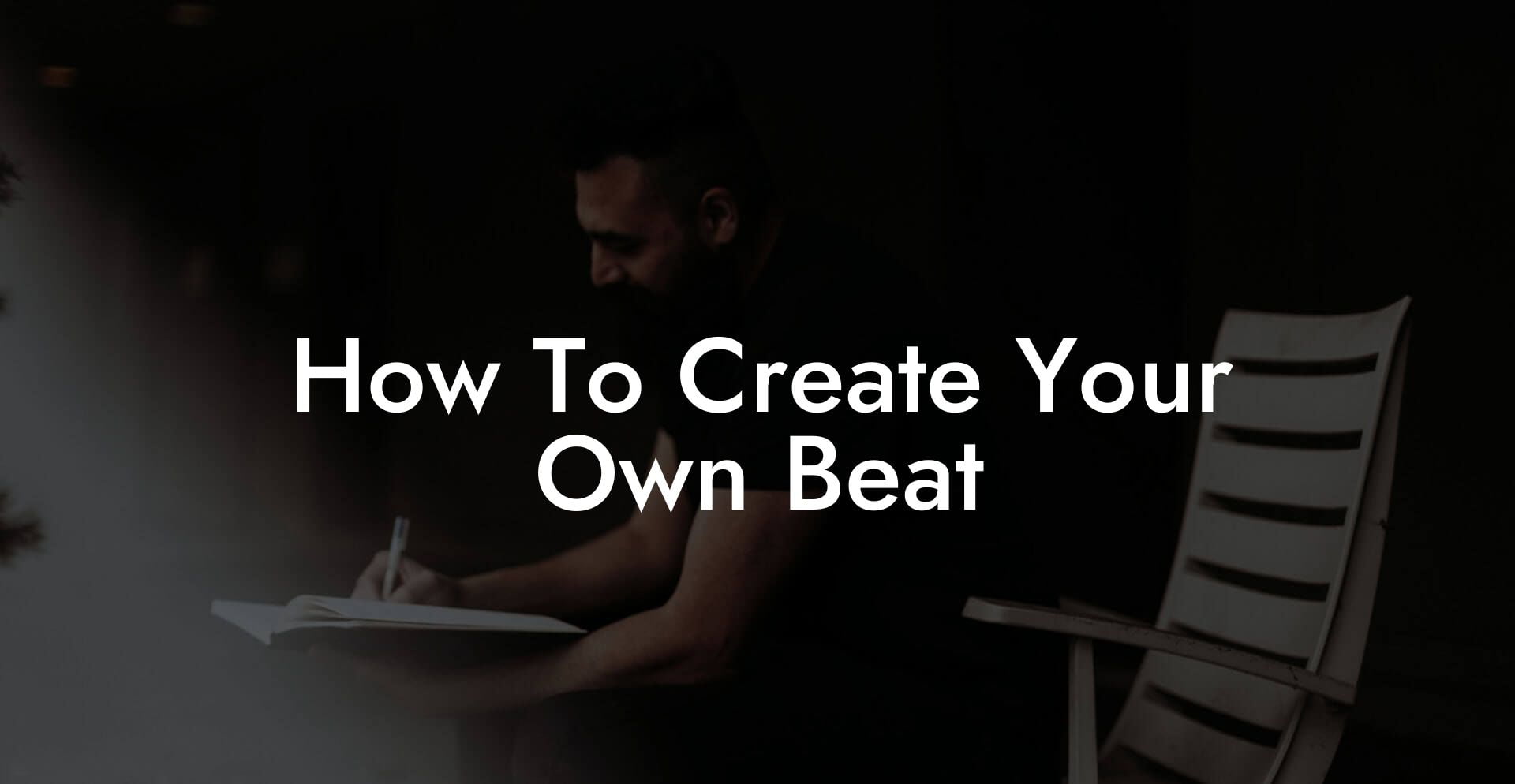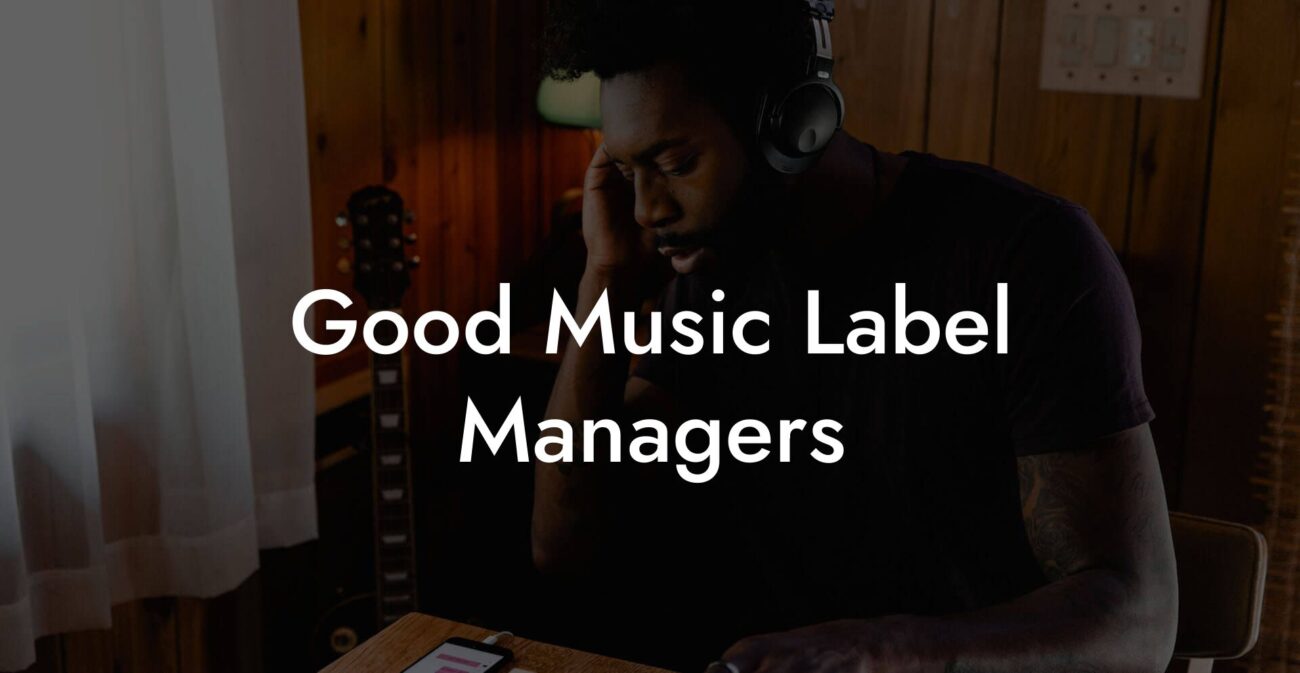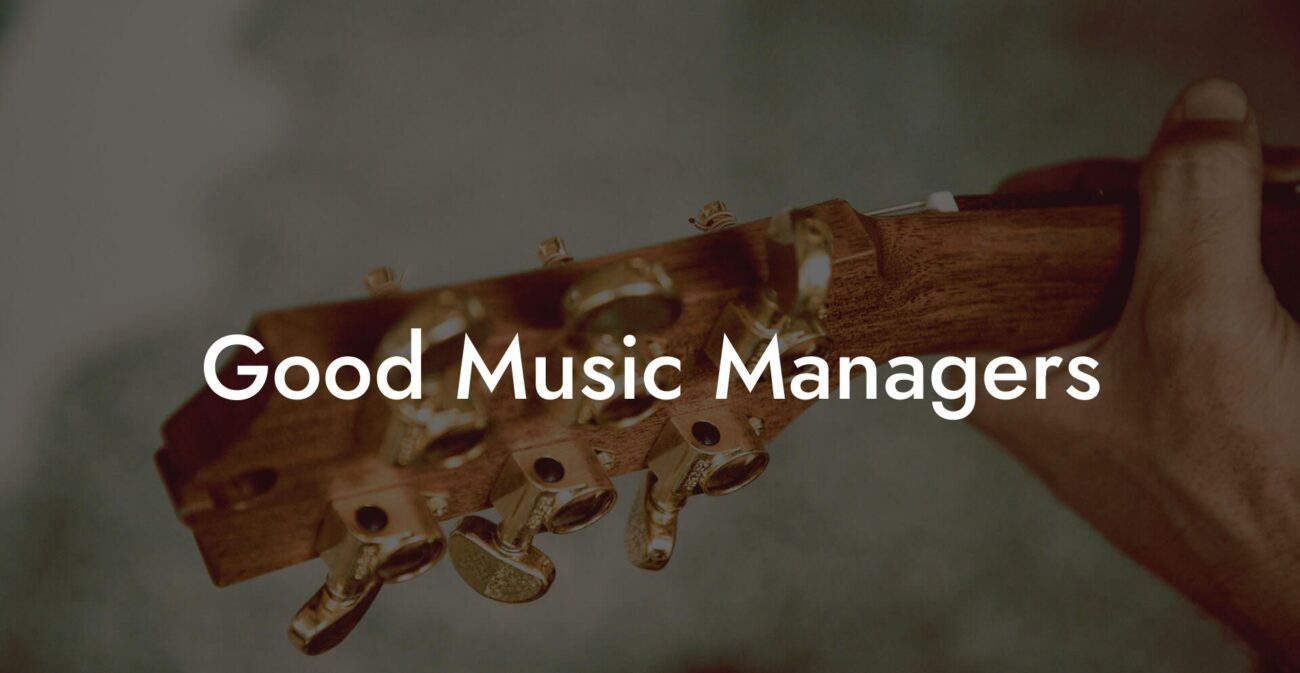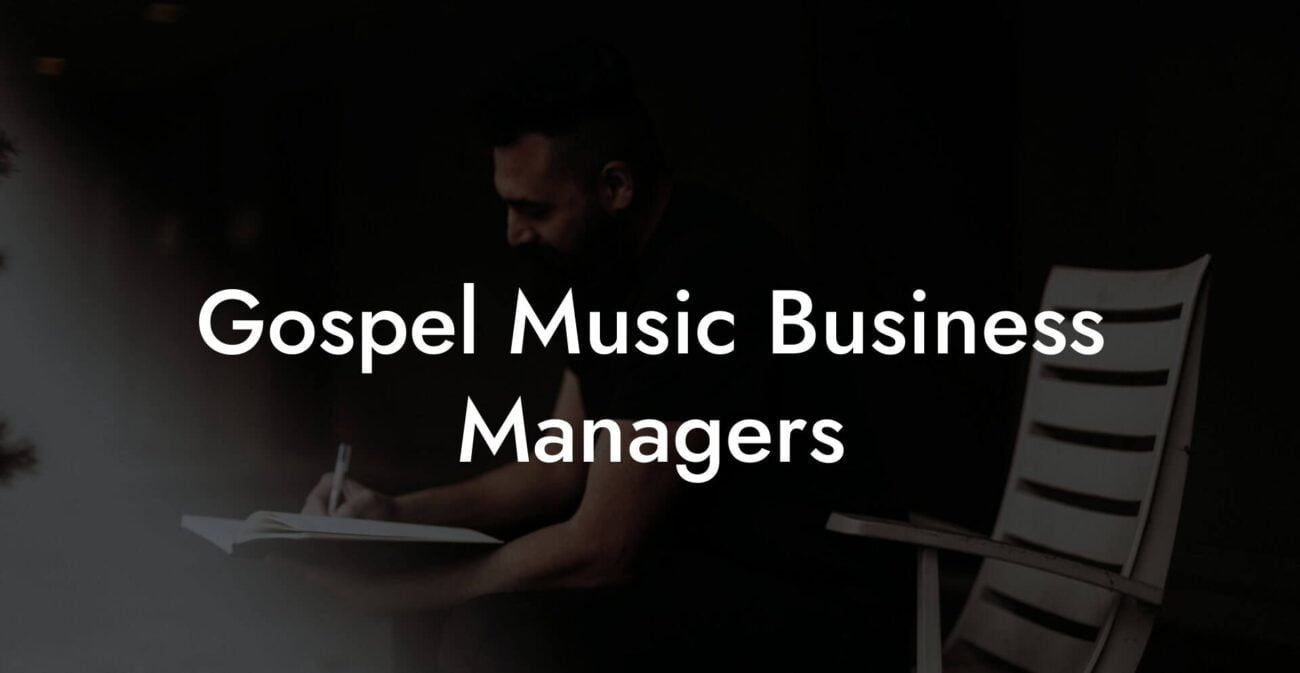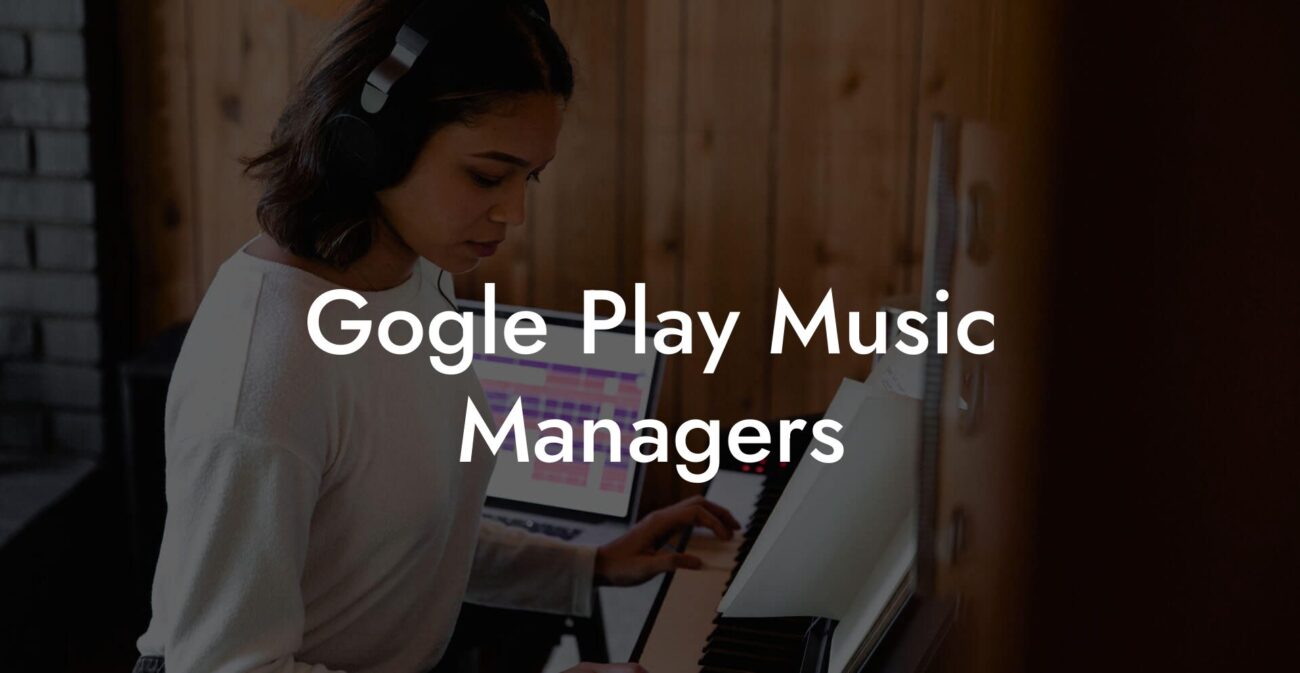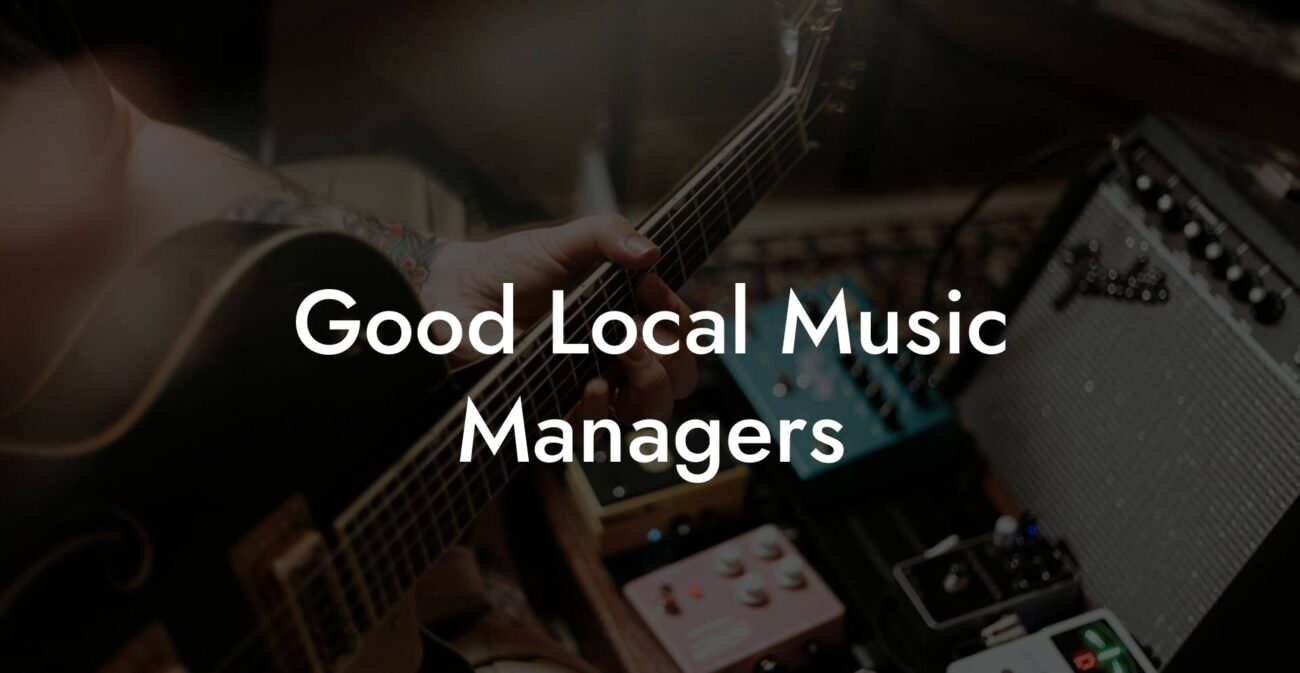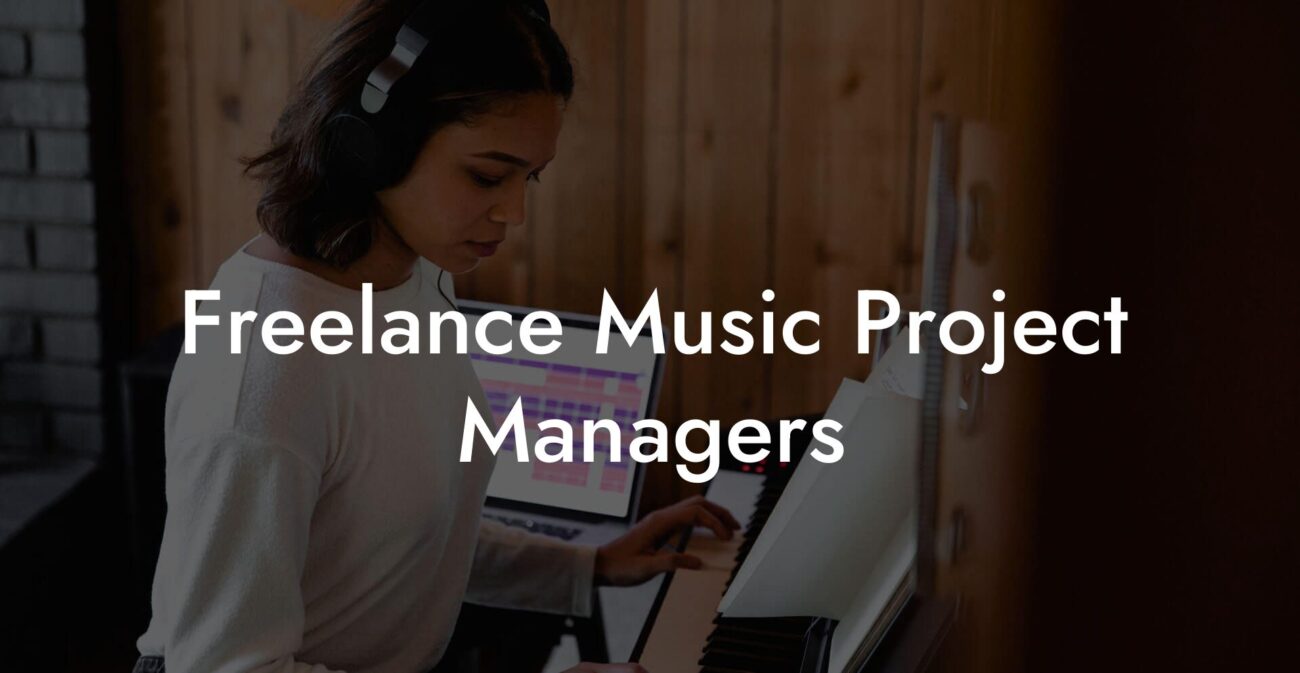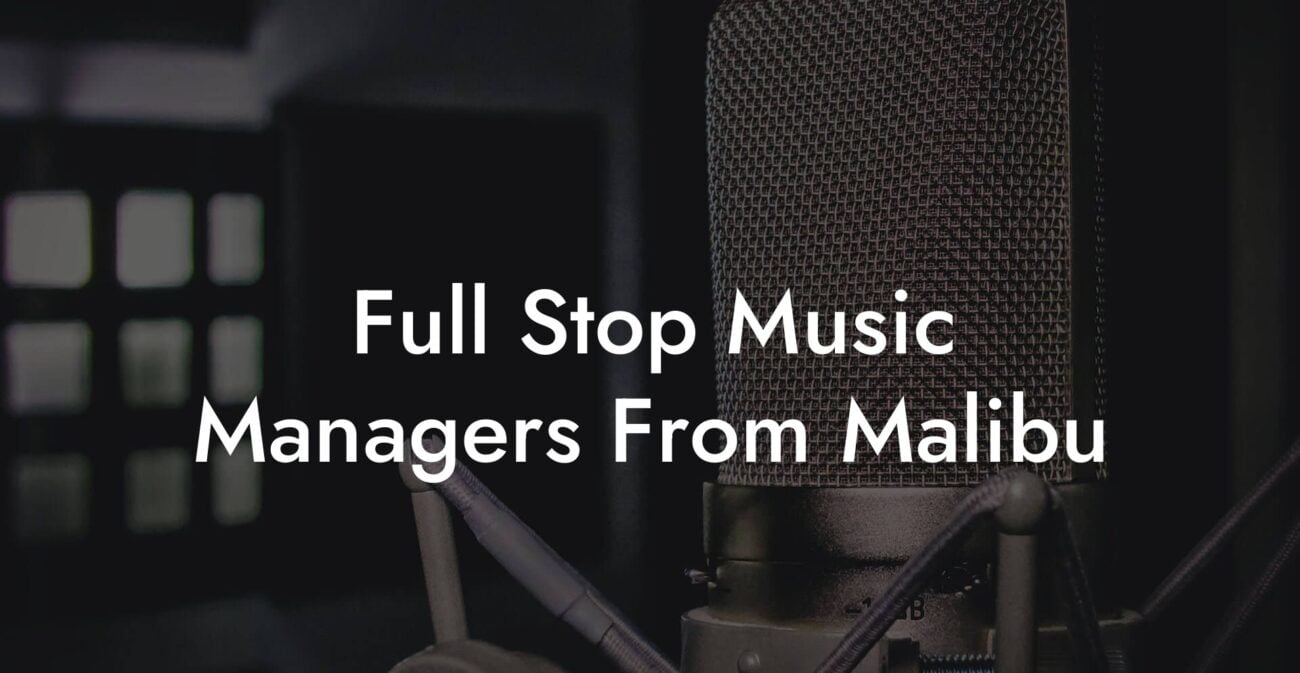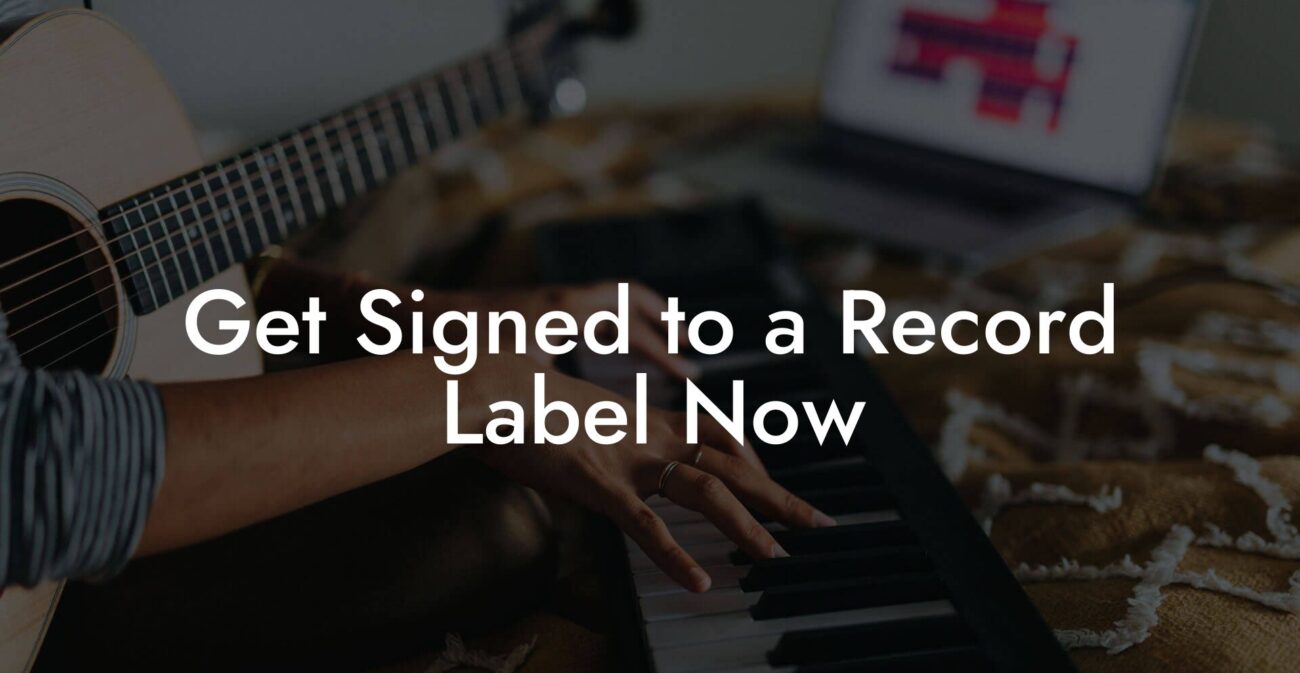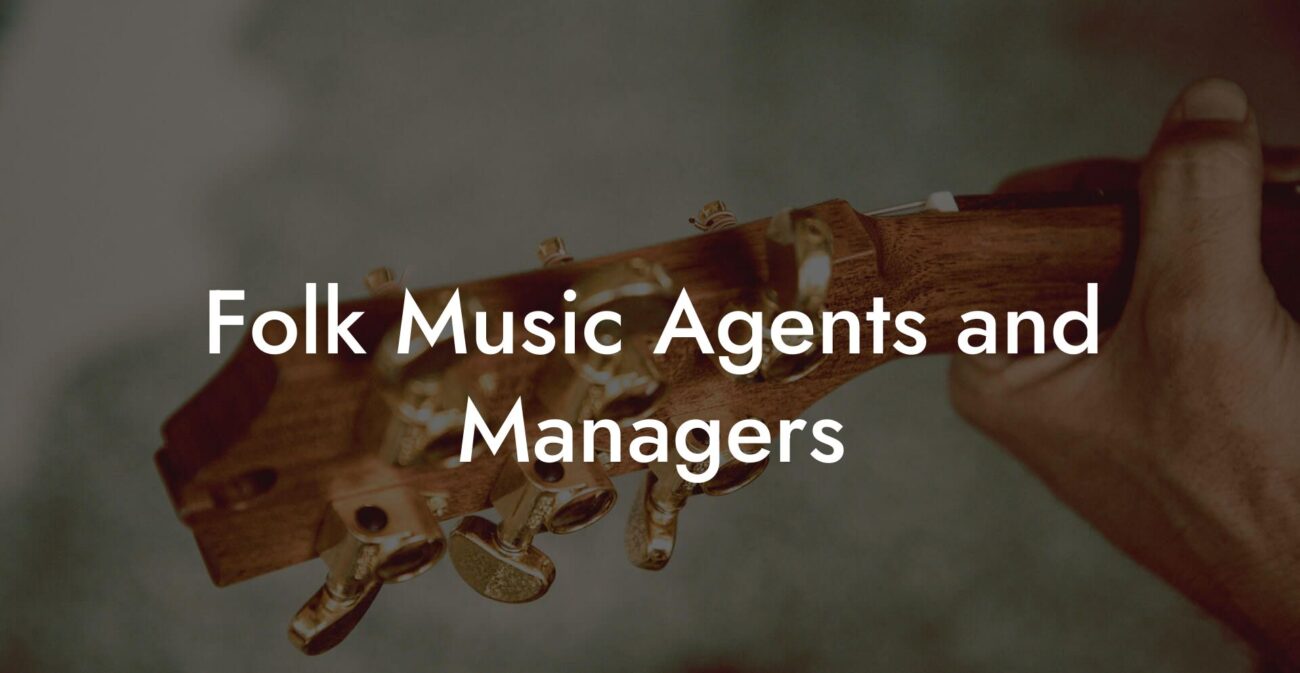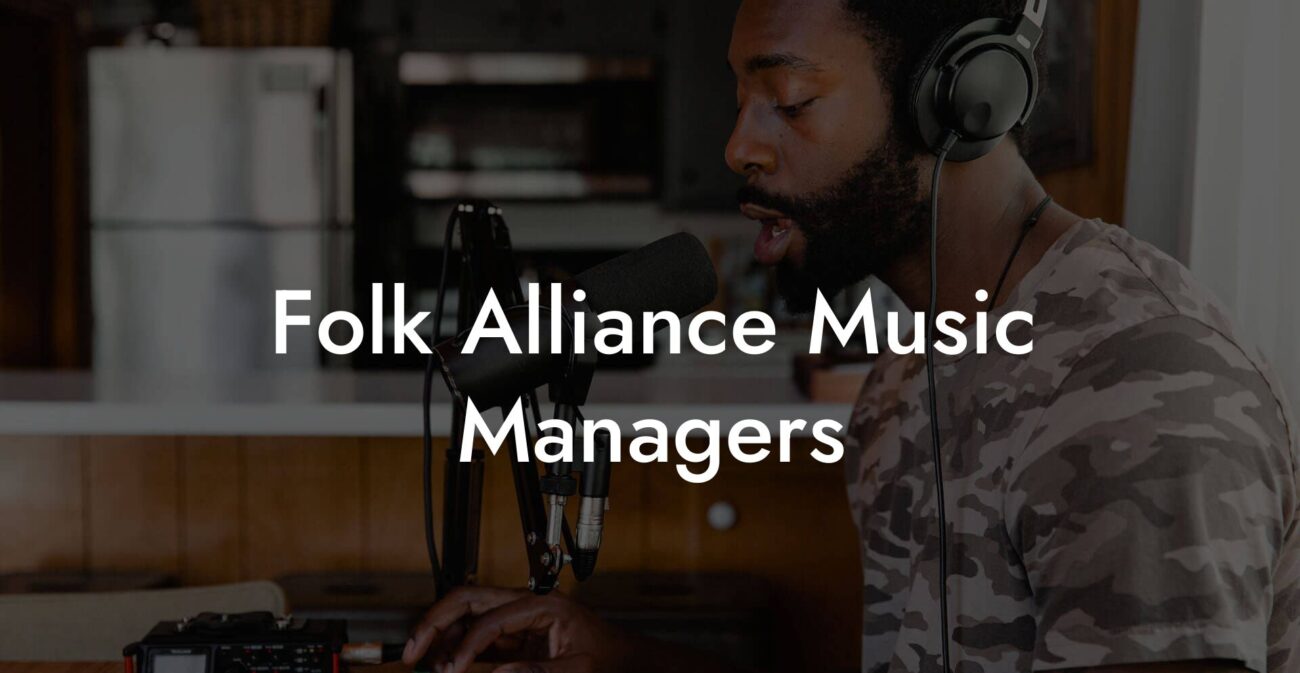Ever caught yourself bobbing your head to a killer rhythm and thought, “I wish I could make that beat!” Well, welcome to the club—beat-making is no longer reserved for high-budget studios or secretive underground labs. With a dash of creativity, a pinch of tech know-how, and just a sprinkle of inspiration, you too can create your very own beat. Whether you’re dreaming of making the next chart-topping hit or just want to spice up your home jam sessions, this guide is your backstage pass to the fascinating world of beat-making. Let’s crank up the bass and dive into the art of creating your own beat!
Looking to write your next song? Transform your creative ideas into songs that people will love, and skyrocket your music career with Lyric Assistant. The perfect songwriting assistant. Find out more →
Quick Links to Useful Sections
- Why Creating Your Own Beat Matters
- Essential Tools and Software for Beat-Making
- Digital Audio Workstations (DAWs)
- MIDI Controllers and Drum Pads
- Plug-ins and Virtual Instruments
- Audio Interfaces and Headphones
- Understanding Beat-Making Basics: The Building Blocks of a Killer Track
- The Role of Tempo and Rhythm
- Layering Sounds: Drums, Bass, and Melodies
- Sampling and Loops: Recycling Music with a Twist
- Step-by-Step Guide to Creating Your Own Beat
- Step 1: Choose Your Style and Set the Stage
- Step 2: Lay Down a Drum Track
- Step 3: Add the Bassline
- Step 4: Layer Melodic Elements and Harmonies
- Step 5: Arrange Your Beat
- Step 6: Fine-Tuning and Effects
- Step 7: Export, Share, and Revise
- Tips and Tricks for a Killer Beat
- Troubleshooting and Experimenting: Keeping the Creative Juices Flowing
- Embrace the Iterative Process
- Change Your Environment
- Experiment With Sound Design
- Use Templates and Tutorials
- Accept Feedback Gracefully
- Collaborating and Leveraging Lyric Assistant for Your Beat
- Resources and Community Support: Your Next Steps
- Online Tutorials and Courses
- Forums and Social Media Groups
- Local Workshops and Meetups
- Blogs and Podcasts
- FAQs: All Your Beat-Making Questions Answered
- Your Beat Journey Awaits: Embrace the Creative Process
Why Creating Your Own Beat Matters
In a world where individuality reigns supreme, there’s nothing cooler than crafting your own beat. Not only does it grant you creative freedom, but it also lets you imprint your unique sound and personality onto every track you produce. For millennial and Gen Z music enthusiasts, building your own beats is more than just a hobby—it’s a powerful form of self-expression. Think about it: when you create your own beat, you’re essentially composing the heartbeat of your future hit song.
Moreover, in an era where DIY culture is exploding, creating beats can open doors to new opportunities in songwriting, producing, and even collaborating with other artists. And let’s be honest—there’s a serious brag factor when you can say, “I made that beat myself.” Beyond the personal satisfaction, owning your creative process allows you to experiment with sounds, styles, and genres, turning each beat into a canvas for your musical artistry.
So, whether you’re an aspiring musician stepping into the limelight or a bedroom producer looking to elevate your tracks, learning how to create your own beat is a game-changer.
Essential Tools and Software for Beat-Making
Before you hit the studio—aka your computer or smartphone—there are a few essential tools and software you’ll need to get started. Think of these as your musical toolbox. Without the right gear, even the best ideas can fall flat. But don’t worry, you don’t have to break the bank! Many free and affordable options are available that let you experiment and grow.
Write Lyrics Like a Professional Songwriter
The ultimate songwriting tool that takes your creative vision to the next level! With just a few clicks, you can unleash your inner songwriter and craft a hit that's uniquely yours. Your song. You own it.
Digital Audio Workstations (DAWs)
At the heart of beat-making is your Digital Audio Workstation (DAW). This is the software where you lay down tracks, chop up samples, add effects, and bring everything together. Popular DAWs include:
- FL Studio: Favored by hip-hop and EDM producers, with an intuitive layout for both beginners and pros.
- Ableton Live: Ideal for live performances and studio production, known for its streamlined workflow.
- Logic Pro: A go-to for Mac users, offering a robust suite of tools and instruments.
- GarageBand: Perfect for beginners, offering a user-friendly interface and basic production tools.
No matter which DAW you choose, these platforms provide all the features necessary to craft your sound, layer instruments, and mix your track to perfection.
MIDI Controllers and Drum Pads
While you can certainly create beats using your computer’s keyboard and mouse, investing in a MIDI controller or drum pad can take your music to the next level. These devices let you play virtual instruments in real-time, and they’re particularly useful for programming complex drum patterns and melodies. Many controllers come with tactile pads, faders, and knobs that make live performances and studio sessions feel more intuitive.
Plug-ins and Virtual Instruments
Another must-have in your beat-making arsenal is a collection of plug-ins and virtual instruments. These add layers of sound that range from realistic pianos and lush strings to quirky synths and crunchy analog emulations. Whether you’re looking for that vintage vinyl crackle or a futuristic synthesized melody, there’s a plug-in out there ready to help you achieve it.
Alternatives like free plug-ins and sound libraries can also provide a solid starting point, so you can experiment without pouring a fortune into expensive software.
Audio Interfaces and Headphones
To round out your setup, an audio interface can improve your recording quality and overall sound output. Pair that with a good pair of studio headphones, and you’ll be hearing every nuance of your beat with crystal clarity. After all, if your beats don’t sound great on your headphones, how will they hit on club speakers?
With the right tools in hand, you’re equipped to embark on your beat-making journey like a pro.
Understanding Beat-Making Basics: The Building Blocks of a Killer Track
Just as every great building starts with a strong foundation, every mind-blowing beat is built on a few key elements. Let’s break down the basics so you know exactly what’s going into your masterpiece.
The Role of Tempo and Rhythm
Tempo is the speed at which your beat unfolds, measured in beats per minute (BPM). Whether you’re aiming for a chilled-out lo-fi vibe or an energetic dance track, setting the right tempo is crucial. Think about it this way: tempo is the heartbeat of your song. If it’s too slow, your listeners might drift off; too fast, and they might get overwhelmed.
Rhythm, on the other hand, is all about the pattern and timing of the beats. It’s the groove that gets feet tapping and heads nodding. Experimenting with different drum patterns—like the classic four-on-the-floor or a more off-kilter syncopated rhythm—can completely change the feel of your beat.
Layering Sounds: Drums, Bass, and Melodies
Once you’ve dialed in your tempo and rhythm, it’s time to start layering sounds. Think of this process like making a delicious, multi-layered cake. Your drum track is the sturdy base, your bassline adds depth, and the melody or lead instrument is the flavorful icing on top. Each element should complement the others, creating a cohesive and dynamic soundscape.
Experiment with different combinations, and don’t be afraid to break the rules—sometimes the most unconventional mix can lead to a truly unique beat.
Sampling and Loops: Recycling Music with a Twist
One of the coolest aspects of beat-making is the ability to sample existing sounds or use loops as building blocks for something new. Sampling is like giving a nod to the music that inspired you, while also making it unmistakably your own. Just remember to be mindful of copyright laws—unless you’re working with royalty-free samples or have permission, you’re venturing into legal grey areas.
Loops, on the other hand, are pre-recorded segments of sound that you can manipulate and arrange. They’re fantastic for beginners since they offer a ready-made structure to build upon. With modern software, blending loops and samples into a fluid beat has never been easier.
Step-by-Step Guide to Creating Your Own Beat
Now that we’ve covered the essentials, it’s time to get hands-on. Here’s your step-by-step guide to assembling a beat that’s as fresh as your favorite pair of sneakers.
Step 1: Choose Your Style and Set the Stage
Before you even open your DAW, decide on the vibe you’re going for. Do you want an urban trap beat, a soulful R&B groove, or a retro funk fill? Your choice of style will shape everything from your instrument selection to your rhythm patterns.
Once you’ve nailed down the style, open your DAW and set the project tempo. This is your musical canvas, so choose a BPM that reflects the energy of your chosen genre.
Step 2: Lay Down a Drum Track
The drum track is the skeleton of your beat. Start by programming a simple drum pattern—think kick, snare, and hi-hat. Don’t stress about perfection on the first go; the key is to get a solid rhythm flowing.
For a little extra flair, try experimenting with ghost notes on the snare or switching up your hi-hat rhythms for a more dynamic feel. You might find that the subtle swings and syncopations add a groove that makes your beat irresistibly catchy.
Step 3: Add the Bassline
The bassline is what links your drums to the rest of the instruments. It provides a harmonic foundation and adds oomph to your track. Start with a simple bass pattern that complements your drum line. Once you’re comfortable, experiment with slides, variations in rhythm, and octave shifts to create a bassline that really pops.
Remember, the bass should not only drive the beat but also create an emotional undercurrent that resonates with your listeners.
Step 4: Layer Melodic Elements and Harmonies
With your drums and bass holding it down, it’s time to sprinkle in some melodic magic. This is where you can get really creative. Open up a new track and start experimenting with synth leads, pianos, or even sampled vocal chops. Try layering a catchy hook or a repetitive melody over your rhythm section.
Don’t be afraid to play around with effects like reverb, delay, and distortion—sometimes a subtle tweak can make your melody soar.
Step 5: Arrange Your Beat
Now that you’ve got all your elements, it’s time to arrange your beat into a full-fledged track. This might include an intro, verses, a build-up, a drop, and even a breakdown. Think of your track as a story with a beginning, middle, and end. Arrange your sections in a way that keeps the listener engaged. Vary the intensity of the beat, drop out certain elements for impact, and then layer them back in to keep things exciting.
Use your DAW’s timeline to experiment with transitions and create smooth, seamless shifts between sections. This is where your creative decisions really make your track come alive.
Step 6: Fine-Tuning and Effects
With your arrangement in place, it’s time for some fine-tuning. Listen to your beat repeatedly and identify any rough edges. This step involves tweaking the EQ, adjusting the balance between the instruments, and adding subtle effects to enhance your track.
Consider using sidechain compression to create a rhythmic pumping effect, or play with delay and reverb to add space and depth. The more you experiment with effects, the more unique and polished your beat will sound.
Step 7: Export, Share, and Revise
Once you’re satisfied with your creation, export the track as a high-quality audio file. Share it with friends, fellow producers, or even on social media platforms to gather feedback. Don’t be afraid to revise and refine your beat—music is as much about evolution as it is about creation.
And remember, every beat you make is a stepping-stone. Even if your first creation isn’t Grammy-worthy, each project brings you one step closer to mastering the art of beat-making.
Tips and Tricks for a Killer Beat
While following the steps above is a great start, here are some insider tips to help your beat rise above the noise:
- Embrace Imperfection: Some of the best beats have quirks that add character. Don’t erase unique moments that might seem mistake-prone—these can become your signature sound.
- Take Breaks: Stepping away for a bit can give you a fresh ear. Sometimes you need distance to hear what’s missing or what could be improved.
- Experiment With Genre Fusion: Mix elements from different genres to create a sound that’s uniquely yours. Ever thought of blending trap with funk or lo-fi with pop? Now’s the time!
- Utilize Layering Techniques: Layer multiple drum samples or synth textures to add depth and richness to your beat. Experiment with subtle variations that evolve throughout the track.
- Let the Software Inspire You: Many DAWs have built-in features like randomization tools or auto-fill functions. Use these as creative springboards rather than constraints.
- Keep Learning: The digital world of music production is always evolving. Stay updated with new plug-ins, tutorials, and techniques. Platforms like YouTube, Skillshare, and dedicated production forums can fuel your growth.
- Collaborate: Sometimes the freshest ideas come from bouncing creative energy off another musician. Collaborations can spark innovative beats that you might never have conceived alone.
Let these techniques guide you as you refine your sound. The goal is not to mimic but to innovate—turning every beat into a unique expression of your artistic vision.
Troubleshooting and Experimenting: Keeping the Creative Juices Flowing
Every beat maker hits a wall every now and then. Whether you’re dealing with creative block, technical issues, or just a case of too many ideas, here are some strategies to overcome obstacles:
Embrace the Iterative Process
Beat-making is less about making something perfect on the first try and more about constant iteration. If a loop doesn’t feel right, don’t hesitate to scrap it and start over—or better yet, save it for future inspiration.
Change Your Environment
Sometimes, a change of scenery can spark creativity. If you’re stuck staring at the same screen for hours, take a break, grab a coffee, or go for a walk. A fresh perspective is often the key to unlocking new ideas.
Experiment With Sound Design
Challenge yourself to design new sounds from scratch. Tweak parameters on synths or record everyday objects and use them as samples. This blend of unconventional sounds can yield surprising and original results.
Use Templates and Tutorials
There’s nothing wrong with learning the ropes from established producers. Many DAWs offer tutorials and templates—use these as reference points to spark new ideas or as starting blocks that you can heavily modify.
Accept Feedback Gracefully
Critics and constructive feedback can be invaluable. Don’t shy away from sharing your work-in-progress with trusted friends or online communities. Sometimes an outside ear can pinpoint issues that you might have missed.
Remind yourself that every setback is just another opportunity to grow. The best beats often emerge from the creative tension of trial and error.
Collaborating and Leveraging Lyric Assistant for Your Beat
In this digital age, collaboration isn’t just possible—it’s encouraged. Join forces with other producers, vocalists, or even poets and rappers to create tracks that transcend individual talents. When your beat finally comes to life, why not add lyrics that tell a story? That’s where Lyric Assistant steps in.
Lyric Assistant is designed to help you effortlessly write lyrics for your next track. Whether you’re facing writer’s block or searching for the perfect rhyme, this tool can help break down those creative barriers. With a few clicks, you can generate lyrics that complement your beat, ensuring every element of your song works in harmony. It’s like having a co-writer right there in your digital studio.
Collaborating with other artists while utilizing tools like Lyric Assistant can transform a simple beat into a fully realized musical project. Don’t be afraid to experiment with different styles and lyrical themes—the more diverse your input, the richer the final product.
Resources and Community Support: Your Next Steps
The journey of beat-making is a marathon, not a sprint, and you don’t have to go it alone. There are countless resources and communities out there brimming with tips, tutorials, and collaborative opportunities. Here are some options to consider:
Online Tutorials and Courses
Platforms like YouTube, Coursera, and Skillshare offer countless courses on music production, sound design, and even niche topics like drum programming. These resources can provide you with insights from experienced producers and bolster your confidence.
Forums and Social Media Groups
Connect with fellow beat-makers on forums like Reddit’s r/makinghiphop, Gearslutz, or dedicated Facebook groups. These communities aren’t just about sharing techniques—they’re about building relationships, sharing inspiration, and sometimes even collaborating on projects.
Local Workshops and Meetups
Check out local music production workshops or meetups in your area. Nothing beats face-to-face collaboration, and sometimes a local group can provide the motivation to keep pushing your creative boundaries.
Blogs and Podcasts
Stay updated with the latest trends in music production by following blogs and podcasts dedicated to beat-making, production tips, and industry news. They can offer fresh perspectives and help keep your creative approaches current.
Leveraging these resources and connecting with a supportive community can help you continuously refine your skills and stay inspired. Remember, every pro was once an amateur—and every expert beat maker keeps learning and evolving.
FAQs: All Your Beat-Making Questions Answered
We know you might have some burning questions as you embark on your beat-making journey, so here are some frequently asked questions to help you out:
1. What software should I use to create my own beat?
There are many quality DAWs out there, from FL Studio and Ableton Live to Logic Pro and GarageBand. Choose one that matches your budget, system, and style of workflow—you can always experiment with different options to see which one feels right for you.
2. Do I need expensive equipment to start beat-making?
Not at all! Many successful producers began with a basic setup—a decent computer, a DAW (some of which are free), and a pair of headphones. As you progress, consider investing in a MIDI controller or drum pad, but it’s not a requirement to start.
3. How can I learn the basics of rhythm and beat structure?
Dive into online tutorials, courses, and YouTube walkthroughs that cover beat-making fundamentals. Experiment with different genres and rhythms to find what resonates with you.
4. What are some common pitfalls for beginners?
Overcomplicating your beat with too many layers, not taking breaks when stuck, and neglecting the essential elements of rhythm and bass can hinder your progress. Start simple, focus on balance, and don’t be afraid to revise your work.
5. How do I make my beat sound more professional?
Focus on proper mixing, experiment with effects, use quality samples, and continually refine your arrangement. Small adjustments in EQ, compression, and reverberation can have a big impact on the final sound.
6. Can I collaborate with others if I’m new to beat-making?
Absolutely. Collaboration is one of the best ways to gain new perspectives and ideas. Use online forums, social media, or local meetups to connect with fellow artists who share your passion.
7. What if I hit a creative block?
Take a break, experiment with new sounds, or work on a different part of the track. Sometimes stepping away for a little while can help you come back with fresh ideas.
8. How does Lyric Assistant help in the beat-making process?
Lyric Assistant can streamline the process of writing lyrics that complement your beat. Whether you’re struggling with writer’s block or need inspiration for your next hook, this tool provides creative prompts and helps you generate lyrics that elevate your music.
Now that you’re armed with answers to some of your pressing questions, it’s time to jump into the beat-making process with confidence and creativity.
Your Beat Journey Awaits: Embrace the Creative Process
Creating your own beat is an exciting journey of self-expression and musical innovation. As you experiment with drum patterns, basslines, melodies, and a plethora of digital tools, remember that every misstep is just another learning experience. The process is as unpredictable as it is rewarding—one minute you might stumble over an idea, and the next, you’ll be riding the wave of creative adrenaline.
Remain patient with yourself and trust the process. Each beat you create is a testament to your unique creative voice. Whether you’re cooking up a quick loop late at night or meticulously constructing a multi-layered track, keep exploring and refining. With every session, you’ll gain more confidence and insight into your personal style.
Embrace the imperfections, the unexpected twists, and the endless opportunities for collaboration and growth. Remember, the studio is your playground, and every experiment brings you closer to mastering the craft. Your beat-making journey is a celebration of creativity, innovation, and the freedom to express yourself without limits.
So, plug in, power up your DAW, and let your beats speak volumes about who you are. Join the vibrant community of creators, experiment with new techniques, and most importantly, have fun along the way. Your dream track might be just a beat away!
With the tools, techniques, and inspiration shared here, you’re now equipped to create beats that not only move bodies but also move hearts. Whether you aim to drop a chart-topping hit or simply enjoy the creative process, your beat-making adventure is a journey of endless discovery and fun.
Write Lyrics Like a Professional Songwriter
The ultimate songwriting tool that takes your creative vision to the next level! With just a few clicks, you can unleash your inner songwriter and craft a hit that's uniquely yours. Your song. You own it.

